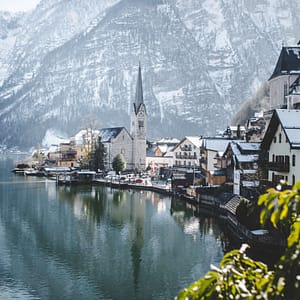Jordan’s tourism industry is empowering a nation
The post Jordan’s tourism industry is empowering a nation appeared first on TD (Travel Daily Media) Brand TD.
Today, travel is all about getting closer to and immersing oneself with the people, places and communities one visits for mutual benefit. Jordan seems to have its finger-on-the-pulse of tourism trends, from eco-tourism to heritage and authentic experiences to active-adventure, whilst using travel as a vehicle for change, to empower a nation with focus on under-represented regions and members of society.
Jordan has introduced ways to do exactly that and often with the patronage of the Jordanian Royal family who continue to support projects and initiatives which make a difference to the lives of Jordanians. Her Majesty Queen Rania has seen tourism and the empowerment of women, as ingredients towards a more sustainable future.
Royal Jordanian Airlines is playing their part too, by expanding its route network this year with operations out of Manchester Airport and Stansted Airport (served well by National Express coach services) and last year celebrated its 60th year of operation. This is impressive, based on regional instability, although Jordan continues to be a stable and safe country or as one eloquent Jordanian guide put it “a quiet house in a noisy neighbourhood”!
The challenge is to spread these new opportunities nationwide and build awareness beyond Petra, Wadi Run and Aqaba, known as Jordan’s golden triangle. This has recently shone a spotlight on the verdant north, in places like Jerash, Ajloun, the eastern desert and As-Salt.
The importance of members of Jordan’s royal family making visits to sites of antiquity, small rural villages and even local homes, is to raise awareness and see first-hand these projects, which use authenticity, immersive experiences and eco-trails to attract new visitors.
Jerash, Ajloun & Azraq
Located close to Jerash’s ancient and venerable historical site, once one of the grandest ancient Roman cities in the world, is ‘Beit Khairuf Souf’ a café, restaurant and social enterprise run by local women from the village of Souf. These entrepreneurial females create age-old Jordanian dishes for the restaurant, but also provide cooking classes and handicrafts, skilfully made in local homes and now sold within their 19th century heritage stone building and former residence.
Another project inducing new visitors north, has been the inauguration of the Ajloun Telefrique in 2023. Visitors can board the cable-car at Ishtafina Forest station to cross the 2.5km course; once inside they experience a zen-like moment to de-stress as visitors glide peacefully over undulating forests and hilltops, whilst glimpsing the 12th Century Ajloun Castle, located nearby the second cable-car station.
The telefrique forms part of the now established ‘Jordan Trail’ a 675km, 40-day route, trail and trek that runs through the spine of Jordan, from Um Qais in the north to the shores of the Red Sea in Aqaba. The section of the trail between Rasoun and Azraq castle is 16.9km, but full of incredible flora and fauna, such as ancient olive trees stretching back to Roman times, alongside the Evergreen Oak, the Carob, wild Pistachio and Strawberry trees and seeing the odd wild boar, stone marten and Golden Jackal.
In the town of Azraq, another imposing fort rises above its settlement and is waiting for guests to explore. Apart from being constructed in dark basalt rock from around 1293 by the Umayyads, the other significance, is its former occupants, namely, T E Lawrence and Sharif Hussein bin Ali. They based themselves here in the winter of 1917–18 during the Arab Revolt against the Turks. From his quarters in the fort, T E Lawrence had views of the nearby palm-fringed oasis at Azraq, which today sits close to Azraq Wetlands Reserve.
The Wetlands Reserve is next to one of the Royal Society for the Conservation of Nature (RSCN) lodges, which is helping to preserve and maintain what is left of the once vast wetlands. It has become another destination for birdwatchers to view some 300 species of resident and migratory birds. The lodge provides comfortable accommodation and respite from the heat of the desert and a fulsome lunch prepared by locals from Azraq.
As-Salt
In contrast to Amman and often overlooked on itineraries is the city of As-Salt, just a short drive north-west from Amman. As-Salt prides itself on characteristics of tolerance and coexistence, matched by an eclectic mix of architectural styles representing Ottoman, Art Nouveau and Neo-Classical styles and built in the distinctive local yellow limestone.
The finest example of this is the merchant House ‘Abu Jaber’, now home to the ‘Old As-Salt Museum’ showcasing the city’s golden era during Ottoman times. The heritage buildings tall and elegant arched windows are reminiscent of the era, behind which lie frescoed ceilings painted by Italian artists. And one of the reasons As-Salt was inscribed on the UNESCO World Heritage list in 2021.
‘Fatmeh’s House’ in As-Salt has become a landmark in the city, courtesy of Fatmeh Al-Zoubi’s talents in the kitchen. Her notoriety has brought royalty to her cosy home in the old town. Her Majesty Queen Rania and The King & Queen of Sweden, have made recent visits to the Al-Zoubi family home, to see female enterprise and entrepreneurship in practise, as Fatmeh uses heritage, tradition and cuisine as her areas of expertise.
Amman
Jordan’s capital is an intoxicating and vibrant mixture of antiquity, heritage, culture, art and modernity, living side-by-side and often overlapping to provide a catalyst for social change.
This interplay between ancient and modern can even be found at the Citadel, situated upon Amman’s highest hill, Jabal Al Qala. This revered site can peel back layers of civilizations stretching back to the bronze age, if not further. Today, the visible ruins that remain and which wrap-around Jordan’s archaeological museum are the Umayyad Palace, Byzantine church and the star-attraction, the Temple of Hercules.
Looking east from the Citadel, is to capture old Amman’s low-rise blocks of residential buildings sprawling across the hillsides with downtown’s 6000-seat Roman amphitheatre at its heart. In the opposite direction towards the west, modern Amman pulsates with LED-lit malls, hotels, restaurants and high-rises which are redefining the skyline.
It is in the old districts closest to downtown, that art is not confined to galleries, but upon walls, buildings and public spaces; street art tours snake all the way down to the ‘Hashemite Plaza’, next to the Amphitheatre where one can view the city’s most famous mega-mural, displayed on the gable-end of a building. It is called ‘The Column’, depicting a middle-aged working-man in bright yellow-shirt, wearing a Keffiyeh (headscarf) and carrying a Nabataean column-capital on his head, representing the city of Petra.
The mural is visible from the citadel, once again a symbiotic link between the ancient and modern, creativity and traditions, all of which are traits helping Jordan forge into the future!
The post Jordan’s tourism industry is empowering a nation appeared first on Brand TD.












